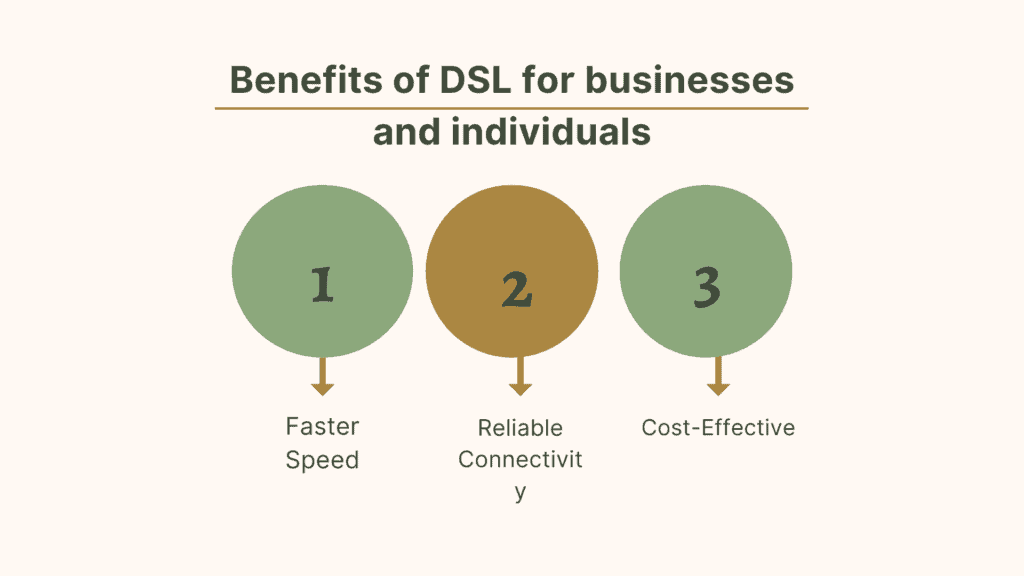Table of Contents
Key Takeaways
- Digital Subscriber Line (DSL) technology offers high-speed internet connectivity over existing telephone lines, making it a cost-effective solution for many households and businesses.
- One key project idea for DSL is to improve the speed and reliability of the connection. This can be achieved by upgrading the infrastructure, optimizing signal transmission, and implementing advanced error correction techniques.
- Another project idea is to expand the coverage of DSL networks to reach underserved areas. This can involve extending the existing infrastructure or deploying new DSL equipment in areas where high-speed internet access is limited.
- DSL can also be used to provide additional services such as Voice over IP (VoIP) and IPTV. Developing projects that integrate these services with DSL can enhance the overall user experience and create new revenue streams for service providers.
- Implementing security measures is crucial in DSL projects to protect user data and prevent unauthorized access. Project ideas can include developing robust encryption protocols, implementing firewalls, and educating users about best practices for online security.
- DSL projects can also focus on improving customer support and service quality. This can involve developing user-friendly interfaces, providing remote troubleshooting tools, and offering timely technical assistance to ensure a smooth user experience.
- Lastly, exploring the potential of DSL in emerging technologies such as Internet of Things (IoT) and smart homes can open up new opportunities for innovation. Project ideas can include integrating DSL with IoT devices, developing smart home automation systems, and exploring the use of DSL for remote monitoring and control.
- Overall, DSL project ideas should aim to enhance the speed, coverage, security, and user experience of DSL networks while also exploring new possibilities for integration with other technologies.

Digital Subscriber Line (DSL) is a speedy internet connection that uses your existing telephone lines to send data. It’s faster than dial-up and allows you to make calls and use the internet at the same time.
DSL divides the bandwidth from your telephone line into two channels. One for data transmission, the other for voice calls. So, you can be online without interrupting your telephone service.
There’re different types of DSL connections including: ADSL (faster downloads than uploads) and SDSL (equal uploads and downloads). Speeds can go up to 100 Mbps, depending on factors like distance and cable quality.
DSL is always on and doesn’t interfere with phone calls or require frequent dial-in like dial-up. Plus, no need to worry if you experience slow speeds – try using microfilters, properly wiring connections, or contacting your service provider for help. Pro Tip: Beat your competitors with DSL!
Benefits of DSL for businesses and individuals

Digital Subscriber Line (DSL) is awesome for businesses and individuals. Let’s check out the benefits:
- Faster Speed: DSL is faster than dial-up services, so you can access online stuff quickly.
- Reliable Connectivity: DSL makes sure you have a stable internet connection, so no interruptions during video calls or file transfers.
- Cost-Effective: DSL is a cheaper option than fiber optic connections, so you get fast speeds without spending a lot.
Plus, there’s more! You can make voice calls while using the internet with DSL, great for small businesses with limited phone lines. For top performance, keep your hardware and equipment updated. Supercharge your business with DSL now – slow internet speed is like a snail race where nobody wins!
List of DSL project ideas for businesses
In the business world today, internet connection is key. DSL tech provides businesses with high-speed internet, making it a great option to increase productivity and communication. If you’re looking for DSL project ideas, here are some possibilities:
- Set up DSL connections in remote offices for better communication and data transfer.
- Upgrade your network infrastructure with VDSL or ADSL2+ for faster speeds and more bandwidth.
- Create a secure VPN with DSL tech for employees to access company resources from any location.
- Establish a backup DSL connection in case your primary connection fails.
- Use DSL-enabled VoIP systems to give customers better service.
- Install surveillance systems with DSL to monitor premises and protect employees.
Before picking a project, consider unique factors like budget, ROI and your business needs. Invest in tailored DSL solutions to gain an edge in the market. Now is the time to unlock possibilities with the power of DSL. Enjoy fun tinkering with tech, and explore these project ideas for your organization.
List of DSL project ideas for individuals

Digital Subscriber Line (DSL) is the top pick for high-speed internet. Here are 3 project ideas to try out as an individual:
- Boosting DSL Speed: Find ways to get more out of your DSL connection. Experiment with different setups, protocols, and equipment. Share your discoveries so others can also get faster DSL speeds.
- Securing DSL Networks: With the rise of online activities, it’s important to secure DSL networks. Develop strategies to protect against data breaches, unauthorised access, and cyber threats. Look into encryption protocols, firewalls, and other security measures.
- Remote Troubleshooting: Create an app or system that allows users to diagnose and fix common DSL issues remotely. Design a user-friendly interface and incorporate automated testing and error detection.
Plus, some extra inspirations:
- Developing a Mobile App: Make a mobile app with useful tools and resources for optimising DSL performance and managing settings from a phone or tablet. Include speed tests, signal monitoring, configuration guides, and troubleshooting tips.
- Exploring New Technologies: Get ahead of tech trends. Investigate FDL which combines copper wire-based DSL with fibre optic infrastructure for faster speeds over long distances.
- Promoting Digital Literacy: Improve digital literacy by creating educational materials or resources on DSL connections. Develop tutorials, blogs, or videos on network optimization, troubleshooting common DSL issues, and best practices for utilising DSL effectively.
Unlock the potential of DSL projects to make a real impact and help users get the most out of their connections.
Frequently Asked Questions
1. What is a digital subscriber line (DSL)?
DSL is a technology that enables high-speed internet access over copper telephone lines. It utilizes existing telephone infrastructure to transmit digital data, allowing faster speeds compared to traditional dial-up connections.
2. How does DSL work?
DSL works by utilizing different frequencies on the copper telephone lines. Voice calls are transmitted at lower frequencies, while the higher frequencies are used for data transmission. This separation allows simultaneous voice and data communication, making DSL an efficient choice for internet access.
3. What are some project ideas related to DSL?
– Developing a new DSL modem with improved speed and performance
– Enhancing DSL network infrastructure to increase coverage and reliability
– Creating innovative DSL-based applications for smart homes or businesses
– Designing tools or software for optimizing DSL connections and troubleshooting issues
– Investigating ways to utilize DSL technology in rural or underserved areas
– Exploring methods to reduce signal interference and improve DSL signal quality
4. What are the benefits of DSL projects?
DSL projects can bring several benefits, including:
– Increased internet speeds for end-users
– Cost-effective internet access using existing infrastructure
– Wide availability in areas with telephone lines
– Simultaneous use of voice and data services
– Potential for innovative applications and services utilizing DSL technology
5. Are there any limitations of DSL?
While DSL offers many advantages, it does have some limitations to consider:
– Speed decreases with longer distances from the telephone exchange
– Performance can be affected by line quality and signal interference
– Availability may be limited in rural or remote areas without telephone infrastructure
– Upgrading or replacing existing infrastructure can be costly
Can Digital Subscriber Line Projects Be Related to Cloud Computing?
Digital subscriber line projects can indeed be related to cloud computing. One of the best cloud computing project ideas could involve optimizing DSL networks for improved connectivity to cloud services. By leveraging cloud resources, it’s possible to enhance data transmission speeds, reduce latency, and bolster overall performance for DSL users accessing cloud-based applications and services.
Are Digital Subscriber Line Projects Included in Electrical Engineering Project Ideas?
Yes, digital subscriber line (DSL) projects can be considered as part of electrical engineering project ideas. DSL technology utilizes existing copper telephone lines to provide high-speed internet access. Electrical engineering students can explore innovative ways to improve DSL technology, enhance its efficiency, or develop new techniques for delivering faster internet connections through DSL.
6. How can I start a DSL project?
To start a DSL project, consider the following steps:
– Research and understand DSL technology and its current advancements
– Identify areas or aspects of DSL that interest you the most
– Define project goals and objectives, targeting specific improvements or innovations
– Collaborate with professionals or organizations experienced in DSL technology
– Plan and execute the project, considering resources, budget, and timeline
The potential of DSL projects is massive. It offers high-speed internet, vital in the digital age. Businesses benefit from faster data transfers, improved productivity and better communication. Individuals enjoy streaming, gaming and remote working.
DSL projects are cost-effective compared to other technologies, making them accessible for small businesses and individuals alike. Plus, they provide reliability and stability, with no interruptions during peak hours.
Plus, DSL projects bridge the digital divide, bringing high-speed internet to rural areas. This facilitates access to e-learning, telehealth and e-commerce. A McKinsey Global Institute (MGI) study found that better digital infrastructure could add $2.2 trillion to the global GDP over 10 years.
References:
Digital Subscriber Line Project Ideas
Digital Subscriber Line Project Ideas
Also Read: